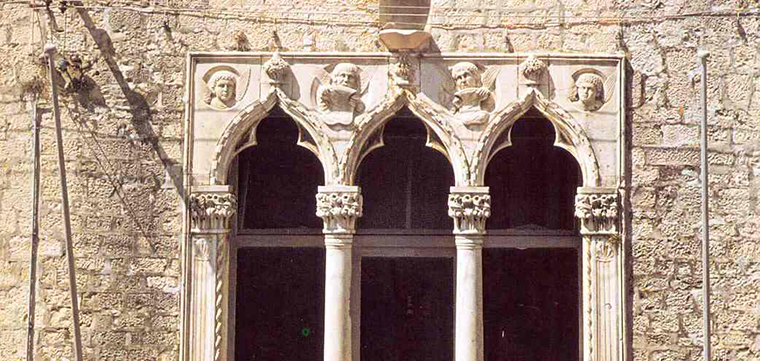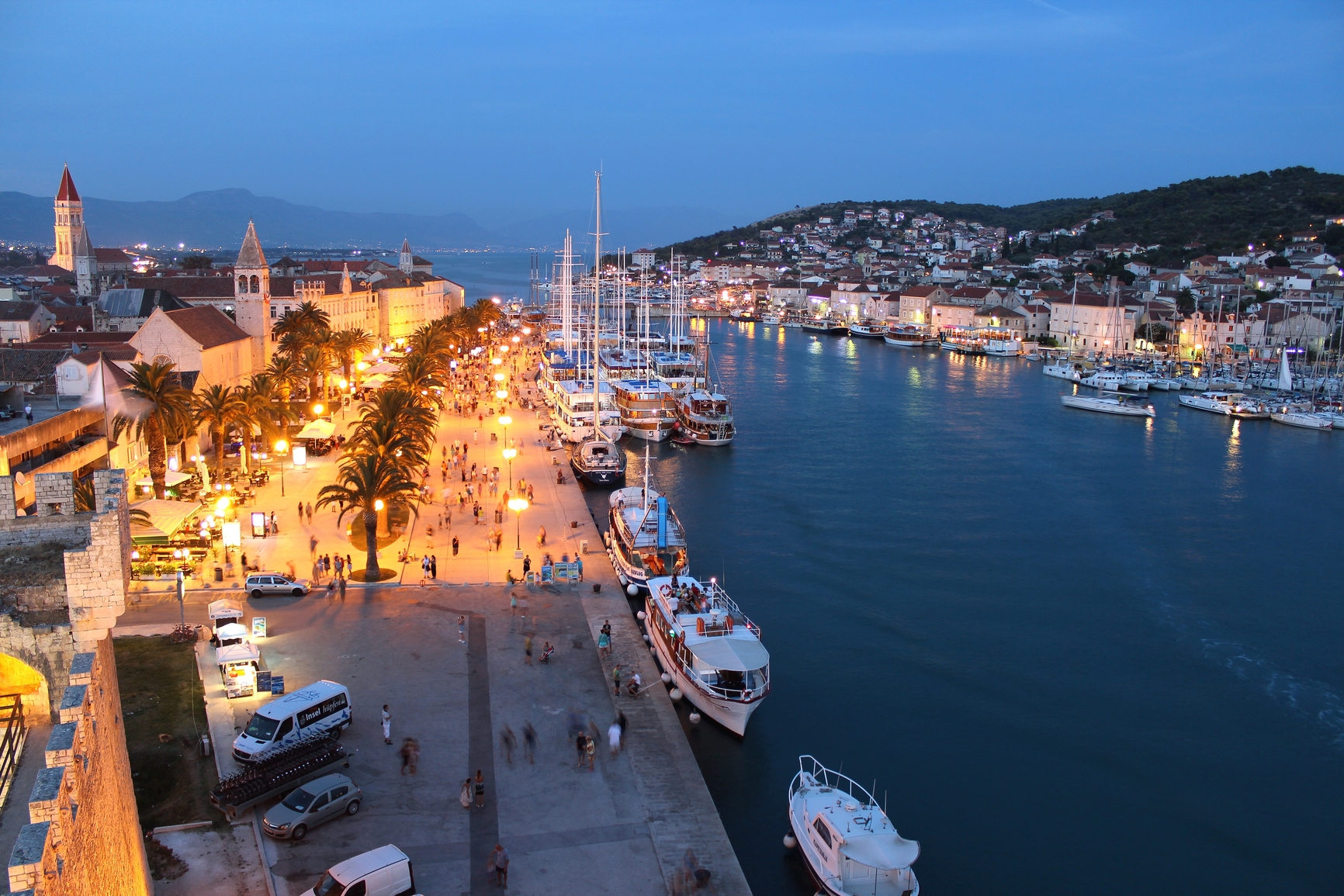This post is also available in: Croatian
After Split, Trogir is the second most visited city break destination in Central Dalmatia
During pre-season, many places in the area of Split-Dalmatia County note a significant number of visitors, including Trogir. It is a small town in Central Dalmatia, where every stone is a monument – the old town nucleus, framed by the turquoise see. Trogir was included in the UNESCO World Heritage List in 1997.
Take a walk along the streets of Trogir means to take a walk through the past and listen to stories and legends of Trogir. Greek, Roman and Venetian heritage, all combined on a small islet, make Trogir one of the most interesting historical oasis on the Adriatic. If you are on a half-hour or one-hour visit to Trogir, go directly to the old town. Visit the cathedral of Saint Lovre (Saint Laurence) and admire the magnificent church portal by master Radovan, one of the most important medieval portals in this part of Europe. Continue your visit to Ćipiko Palace, with its unique and valuable features, owned in the past by one of the most prominent Trogir families. Do not miss the Tower of Kamerlengo, which in Venetian times, represented the Governor’s Palace.

If you have a bit more time to spare, do not miss these 7 attractions. The mysterious stories among the remnants of the city walls, palaces and fortresses will be the ones to inspire you to fall in love with this charming town in the heart of Dalmatia.
1. Kamerlengo Tower
Kamerlengo tower or fortress is located in the southwestern part of Trogir. Its oldest part is the polygonal tower, built at the end of the 14th century. The fort was built in the 15th century and served to accommodate the Venetian military crew. Today, Kamerlengo is a stage for numerous theater performances and other cultural events on the open.
2. Cathedral of Saint Lovre (Saint Lawrence)
St. Lovre is one of the most beautiful cathedrals in Croatia and its construction lasted almost 300 years, completed in 1598. At the entrance of the cathedral, your attention will be caught by the breathtaking portal by master Radovan. This is one of the most important medieval portals in this part of Europe.

3. City Gate
The southern city gate or porta civitatis was built in Renaissance style in 1953 (PROVJERITI GODINU?). On its eastern side, there is a loggia intended for the stay of the passengers who arrived in the city at the time when the gates were closed – today it accommodates a gallery and a souvenir shop. On their top there is the statue of Saint Ivan of Trogir (Saint John of Trogir), patron of the town.

4. Rector’s Palace
The Palace dates back to the 13th century and was restored in the 19th century in Renaissance style. It carries historical coats of Venetian rectors and other noblemen. On the door above the staircase, there is an inscription which states that access is allowed only to noblemen. The Palace also featured a theater, which was later destroyed. Today, it is home of the City Council and City Hall.

5. Ćipiko Palace
The palace of Trogir family Ćipiko is a complex of several buildings, which are a plexus of Romanesque, Gothic and Renaissance styles, connected after certain time into a unique ensemble. The largest part of the complex originates from the 13th century. The south gate of the palace is decorated with the inscription “Nosce te ipsum”, meaning “get to know yourself”, and there are numerous and valuable works of art within the palace.
6. The Love Tree
The fact that love is eternal and an always welcome feeling, is witnessed in Trogir by an unusual tree, which was named “the Love Tree” by the locals, because of the discreet place that its shades provide to the couples passing by. of the crown where the loving couples gathered, called the Tree of Love. Legend says that, the couple who gets to kiss under its branches, will carry their eternal love in their hearts, till death do them part.

7. Trogir promenade or “riva”
Trogir’s “riva” is a top promenade along the sea with, numerous facilities catering to tourists, aas well as an unique dock for yachts and megayachts.
This post is also available in: Croatian

